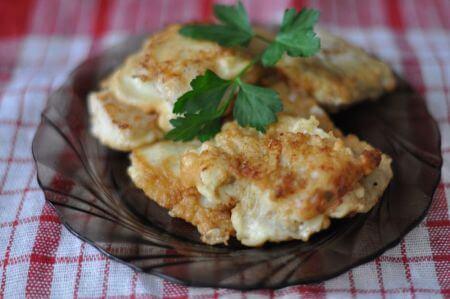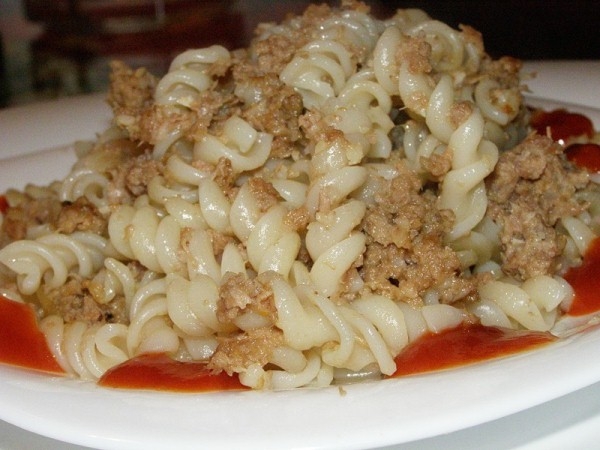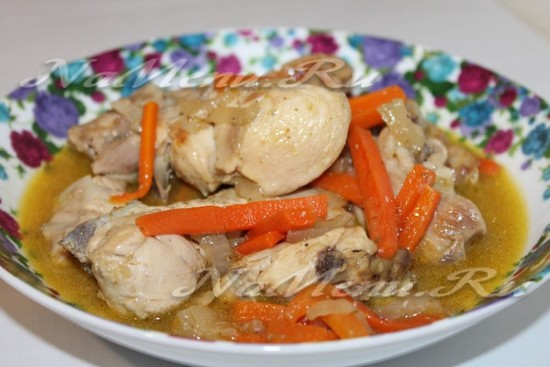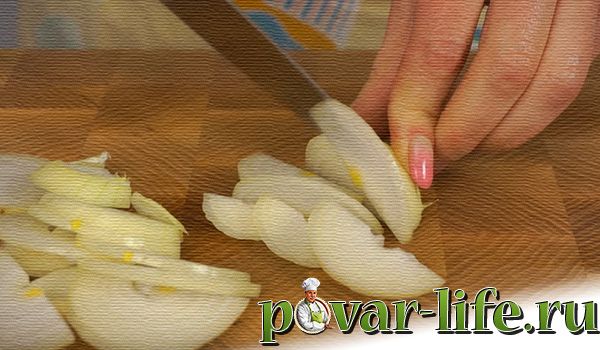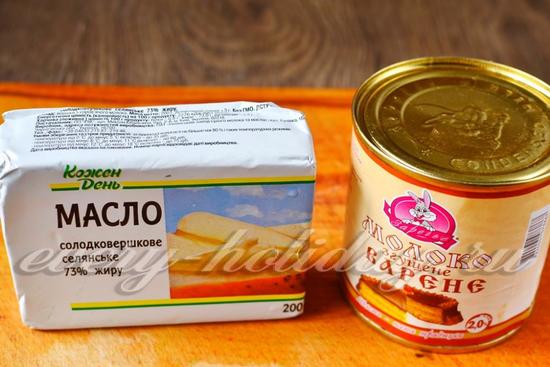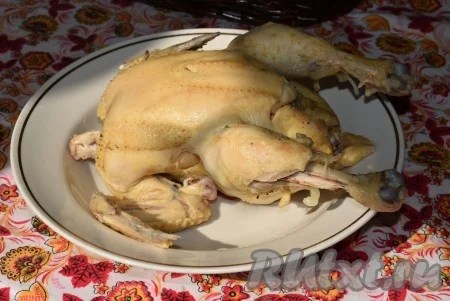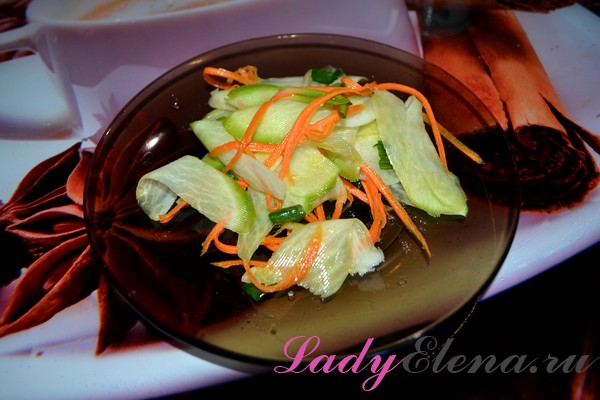Viennese dough. Recipes for dough for pies, cakes and breadmaker
Unlike other types of dough, Viennese do not need much time for preparation, so it is very popular. Viennese dough acquires its excellent taste, tenderness and aroma due to its products. From it prepare tasty small pies with a sweet stuffing.
From Viennese dough, in addition to pies, you can make rolls, pies, cakes. The addition of candied fruit, raisin, lemon or orange zest to the dough will help to diversify the taste of baking.
It will take:
- margarine - 200 g
- milk - 1 l
- flour - 1.5 kg
- sour cream - 200 g
- sugar - 2 glasses
- eggs - 10 pcs.
- fresh yeast - 50 g
- salt - 1 tsp
- vegetable oil - 3 tbsp. spoons
Viennese pastry dough
1. Prepare a brew. To do this, dissolve the yeast in warm milk (100 ml), adding 1 tbsp. spoon of sugar and 2-3 tbsp. spoons of flour. Leave the brew in a warm place for 20-25 minutes, covered with a towel.
2. Combine the melted margarine with sour cream, beat the eggs with sugar and salt. Add all this to the dough and mix thoroughly.
3 Heat the remaining milk and add to the mix too.
4. Adding the sifted flour in portions, knead the dough. Then grease your hands with vegetable oil and knead it to keep up with your hands.
5. Leave the dough in a warm place for 40-50 minutes so that it rises.
6. After that, the dough is ready for the formation of pies or other products.
Good luck to you dough and delicious pies!
On a note
1.
Candied fruits or raisins should be added at the moment when the dough has already arrived. Punch dough, add specified products and knead for even distribution.
Step 1: Insist the yeast.
Pour the required amount of milk into a saucepan. Place the container on the stove, turned on at an average temperature, and heat the milk to 30 - 35 degrees.This process will take you about 1 - 2 minutes. Liquid mass should be warm, but not hot! Pour the milk into a deep bowl and add the right amount of dry yeast to it. Mix the yeast and milk with a tablespoon, cover the bowl with a lid, and let them stand for 15 - 20 minutes in a warm place.Step 2: first knead the dough.
 Beat the right amount of eggs into a clean deep bowl, whisk slightly with a whisk and add the softened butter to them to make the dough, then add the sugar and salt. Continue to whip the mass with a whisk until the sugar grains and salt crystals are completely dissolved. When the liquid mass reaches the consistency you need, enter into it 250 grams sifted wheat flour and mix the dry ingredients with the liquid ingredients with a tablespoon. Again cover the bowl with a lid and place the container in a warm place on 20 - 30 minutesnear the included plate.
Beat the right amount of eggs into a clean deep bowl, whisk slightly with a whisk and add the softened butter to them to make the dough, then add the sugar and salt. Continue to whip the mass with a whisk until the sugar grains and salt crystals are completely dissolved. When the liquid mass reaches the consistency you need, enter into it 250 grams sifted wheat flour and mix the dry ingredients with the liquid ingredients with a tablespoon. Again cover the bowl with a lid and place the container in a warm place on 20 - 30 minutesnear the included plate. Step 3: the second batch of dough.
 After the desired time has elapsed, remove the lid from the bowl, add the remaining sifted wheat flour into the batter and start kneading first with a tablespoon, and then when it becomes difficult for you to mix the dough with the cutlery, continue the kneading with your clean hands right in the bowl. The density of the dough should be soft, elastic and not stick to your hands. Grease a clean bowl with a small amount of vegetable oil and place the kneaded dough in it. Cover the container with a lid, then top with a kitchen towel and put the dough in a warm place, again near the stove on 1.5 - 2 hours in order for it to rise.
After the desired time has elapsed, remove the lid from the bowl, add the remaining sifted wheat flour into the batter and start kneading first with a tablespoon, and then when it becomes difficult for you to mix the dough with the cutlery, continue the kneading with your clean hands right in the bowl. The density of the dough should be soft, elastic and not stick to your hands. Grease a clean bowl with a small amount of vegetable oil and place the kneaded dough in it. Cover the container with a lid, then top with a kitchen towel and put the dough in a warm place, again near the stove on 1.5 - 2 hours in order for it to rise. Step 4: sandwich the dough with butter.
 After about 2 hours, your dough will increase almost 3 times. Sprinkle the kitchen table with sifted wheat flour.
After about 2 hours, your dough will increase almost 3 times. Sprinkle the kitchen table with sifted wheat flour.  Remove the dough from the bowl, place it on the kitchen table and lightly level with your hands.
Remove the dough from the bowl, place it on the kitchen table and lightly level with your hands.  Roll the dough into a layer of thickness to 1 - 1.5 centimeters using a rolling pin. Begin to roll it from the middle to the edges then the layer will turn out to be uniform in thickness.
Roll the dough into a layer of thickness to 1 - 1.5 centimeters using a rolling pin. Begin to roll it from the middle to the edges then the layer will turn out to be uniform in thickness.  Then cut off about softened butter 200 gramsplus minus 10 - 15 grams.
Then cut off about softened butter 200 gramsplus minus 10 - 15 grams.
 Place the butter on the rolled dough and lightly apply it with a rolling pin to make a thinner layer.
Place the butter on the rolled dough and lightly apply it with a rolling pin to make a thinner layer.  Now cover the butter first with the top edge of the dough, then the bottom and after the side edges of the dough, forming in such a way that something like an envelope.
Now cover the butter first with the top edge of the dough, then the bottom and after the side edges of the dough, forming in such a way that something like an envelope.  Place the flour envelope on the kitchen table, sprinkled with wheat flour, and re-roll the dough into a layer. Act very carefully so that the dough does not break and the oil does not flow through the slots. In the picture you can see how the layer of dough, a little torn. If this happens, do not worry, just remove the excess butter, putting it on the surface of the rolled bed, and tweak the torn ends of the dough.
Place the flour envelope on the kitchen table, sprinkled with wheat flour, and re-roll the dough into a layer. Act very carefully so that the dough does not break and the oil does not flow through the slots. In the picture you can see how the layer of dough, a little torn. If this happens, do not worry, just remove the excess butter, putting it on the surface of the rolled bed, and tweak the torn ends of the dough.  Roll out the dough with a layer of butter, rewrap the envelope, wrap in cling film and put in the refrigerator on 15 to 20 minutes.
Roll out the dough with a layer of butter, rewrap the envelope, wrap in cling film and put in the refrigerator on 15 to 20 minutes.
 Through 15 - 20 minutes remove the dough from the fridge, put the flour envelope again on the kitchen table sprinkled with wheat flour and roll it into a layer as thick as 1 - 1.5 centimeters. Then re-form the envelope, wrap it in plastic wrap and again send it in the fridge to 15 - 20 minutesafter this time, you can use dough for making buns, pies, pies, cakes and many other dishes.
Through 15 - 20 minutes remove the dough from the fridge, put the flour envelope again on the kitchen table sprinkled with wheat flour and roll it into a layer as thick as 1 - 1.5 centimeters. Then re-form the envelope, wrap it in plastic wrap and again send it in the fridge to 15 - 20 minutesafter this time, you can use dough for making buns, pies, pies, cakes and many other dishes. Step 5: Serve the Viennese dough.
 Viennese dough immediately after re-cooling, roll a thickness of 1 - 1.5 centimeters and make flour products from it. After you give the dough the desired shape, place it on the non-stick baking sheet, let it rise for 20-25 minutes, brush with a beaten egg and send it to the oven. up to 220 - 230 degrees Celsius.The baking time of flour products from Viennese dough depends on the shape and thickness that you have given to your flour semi-finished product.
Viennese dough immediately after re-cooling, roll a thickness of 1 - 1.5 centimeters and make flour products from it. After you give the dough the desired shape, place it on the non-stick baking sheet, let it rise for 20-25 minutes, brush with a beaten egg and send it to the oven. up to 220 - 230 degrees Celsius.The baking time of flour products from Viennese dough depends on the shape and thickness that you have given to your flour semi-finished product.  Such a dough produces excellent croissants if you roll out the dough to a thickness of 5 to 7 millimeters.
Such a dough produces excellent croissants if you roll out the dough to a thickness of 5 to 7 millimeters.  Delicate buns of air - rolls, the dough for which, it is necessary to roll no more than 1 centimeter in thickness.
Delicate buns of air - rolls, the dough for which, it is necessary to roll no more than 1 centimeter in thickness.  Delicious cake with cottage cheese.
Delicious cake with cottage cheese.  Fragrant buns with chocolate and coconut flakes.
Fragrant buns with chocolate and coconut flakes.  As well as airy poppy pie, but these are just a few of the options. Viennese dough is considered very practical, rolling it thinly, you will get almost puff products, if the thickness of the dough is more than 1 centimeter, you get rich, delicate products, it all depends on your desire. Cook with pleasure and enjoy! Enjoy your meal!
As well as airy poppy pie, but these are just a few of the options. Viennese dough is considered very practical, rolling it thinly, you will get almost puff products, if the thickness of the dough is more than 1 centimeter, you get rich, delicate products, it all depends on your desire. Cook with pleasure and enjoy! Enjoy your meal! - - On request, you can add some ingredients to the Viennese dough, which will give the finished product a pleasant aroma, it can be vanilla sugar or liquid vanilla extract, cinnamon, cloves or nutmeg.
- - Do not overdo the dough in the refrigerator, do not forget that it is half yeast, cooling for too long threatens you with the fact that your flour products may not rise, 2 sets of 15-20 minutes in the refrigerator are enough.
- - Instead of butter, you can use premium margarine and the highest fat content!
- - Instead of dry yeast, you can use pressed fresh yeast, for the above amount of ingredients 20 to 25 grams of fresh yeast.
- - During the preparation of the dough chicken eggs and creamy fat should be at room temperature!
- - You can adjust the taste of the dough by adding the right amount of salt and sugar. If you cook sweeter products with jam, condensed milk or cottage cheese, add more sugar to the dough, if you make bread or pies with stewed mushrooms, salted cheese, boiled meat, in this case you can make the dough less sweet.
Ahead of a series of holidays, and every hostess wants to offer homemade delicious pastries. Moreover, there are a lot of simple and accessible recipes: with different additives, fragrant and soft.
But every cooking has its excellent and signature dishes! Do you want to try the Viennese dough, from which you get the famous “Viennese wreath”, strudels and other delicacies that fill the house with the aromas of cinnamon, apple, vanilla? Then urgently reach for your aprons and go to the kitchen for new impressions!
What is a Viennese dough in general? This is a batch that is distinguished by its lightness of texture, baking, and products made from such dough do not get stale for very long. It is the recipe of Viennese dough that is good to use for making rum babs, buns, sweet loaves and other delicious pastries. The test feature in a long dough proofing: the classic version requires 10 hours to “ripen” the mass. Therefore, the correct hostesses give birth to the brew in the evening, and the dough and pastries are doing in the morning.
For a start it is worth understanding that the Viennese pastry for pies and pies is slightly different from the Viennese pastry, from which they bake cakes and buns. But all in order. First Viennese pastry for pies and pies: ingredients:
- 1 kg of wheat flour;
- 80 gr. yeast (better than "live" fresh);
- 1/2 tsp salts;
- 4 large chicken eggs;
- 8 tbsp. l Sahara;
- 0.5 l. milk;
- 100 gr. top quality butter.
Many hostesses add vanilla (a pinch) to Viennese pastry for pies and pies, but if your pastry is supposed not to be filled with a sweet filling, for example, with cheese and cottage cheese, then it is better to do without vanilla sugar. And now, cooking:
1. For the dough you need to warm the milk to a boil and pour 100 gr. sifted flour;
2. As soon as the mass becomes warm (not hot), add salt, sugar, yeast;
3. Put the brew in the heat for the whole night or at least 10 hours;
4. Clean up the mass in the morning through a sieve;
5. In a separate bowl, beat the eggs from 2 tbsp. l sugar, pour into the dough and beat for 2-3 minutes;
6. Melt the butter;
7. Add flour in portions and pour oil into oil very carefully;
8. Knead soft dough until it begins to lag behind the hands.
Now put the ball of dough in a bowl, cover with a towel and let rise in a warm place twice. Finish your Viennese dough for pies and pies. You can bake them in the oven with any filling.
Another option - Viennese dough for cakes. It differs in a large number of eggs, but the ingredients are:
- 3 kg of wheat flour;
- 1 l. milk;
- 100 gr. live yeast;
- 1 kg of sugar;
- 1/2 tsp salts;
- 12 pcs. large chicken eggs;
- 0.5 kg sour cream medium fat;
- 200 gr. good quality margarine (not butter);
- 200 gr. butter not salted;
- 250 gr. seedless raisins;
- 1/2 Art. vegetable oil; odorless;
- 1 tbsp. l vanilla sugar or vanillin to taste.
How to cook Viennese dough for cakes:
1. All products for sponge are taken only warm;
2. Heat all the milk to the hot state, pour 1 tbsp., Bring to the boil and very quickly dissolve the yeast in the boiling milk;
3. The rest of the warm milk mixed with salt and sugar. Add to this mixture sour cream, flooded margarine, melted butter, eggs, mix until smooth and pour in the yeast;
4. Cover the stewpan with the boil with a lid, wrap it well in a warm towel and put it again in heat for 7-8 hours;
5. Then, gently, add flour in portions and knead the dough neatly until it falls behind the hands and the saucepan;
6. As soon as the mass becomes homogeneous, wrap the bowl in a warm towel again and put into the heat for lifting;
7. As soon as the dough rises a second time, add vanillin, raisins and vegetable oil to the mass. Knead, give rise again;
8. Turn on the oven at 150 C;
9. Arrange the ready-made dough into forms (1/3) and bake for about an hour.
Now you know not only how to make Viennese dough for Easter cakes, but also how to bake them. Cook with pleasure and delight your loved ones.
The dough can be prepared according to many recipes and from the very different composition of ingredients, and, moreover, from different kinds of it create different foods. Yeast is best for puff pancakes, pies, buns and thick pancakes. Biscuit dough is suitable for delicious cakes, cookies, muffins and pastries. For thin pancakes and spring rolls or fritters, they usually take sour dough, and for pastries or shortbreads - shortbread. Without an elementary fresh mass, it is impossible to cook pizza, tortillas or pies. Viennese yeast dough is the pearl of confectionary science, one of the most difficult to prepare, which is therefore considered the pinnacle of skill.
From the Viennese dough is prepared the most diverse delicious pastries - pies, and even Easter cakes for the festive Easter table. Such delicacies for a long time retain their wondrous taste and do not lose their pomp. It should be remembered that this type of dough should begin to be prepared in advance, so that the boil can stand for it and ferment for at least 12 hours. If you choose the most suitable recipe for Viennese dough for you and master the skill of its preparation, then you will always have fresh and tasty pastries on your table for tea.
You can cook the dough a little more quickly, but no less tasty and original. This recipe requires flour (1500 gr.), Sugar (700 gr.) And sour cream (200 ml.). Also not to do in this business without milk (1000 ml.) And yeast (50 gr.). To begin to prepare should brew, for which to combine the yeast, a little sugar and warm milk and flour (60 gr.). After mixing the mass, it should be removed for a quarter of an hour in a warm place. At the same time, you can melt the margarine, mix with the eggs, whipped with sugar, add sour cream, and then - combine with the brew and mix well. In the future, the recipe of the Viennese dough requires only kneading the dough (as long and intensively as far as strength is enough), leave it warm for 40 minutes, after which knead again and start creating baking pieces. From the resulting mass, you can create cakes, delicate buns, or in general, all that is enough imagination.
For wonderful buns and pies, you can prepare a lot according to the following recipe, which requires ingredients such as milk (1000 ml.), Sour cream (500 ml.), Eggs (10 pcs.) And yeast (75 gr.). In addition, you will need sugar (500 gr.), Margarine (150 gr.) A little salt to taste and flour. First of all it is necessary to dilute the yeast in milk (a small amount), then pour flour (30 gr.) And sugar (10 gr.) Into the mass. This recipe for a Viennese dough requires that the resulting mass was thoroughly mixed, and only then can it be set aside for 10 minutes. The remaining milk should be warmed (but not brought to a boil), diluted with sour cream, sugar, eggs and melted margarine, and after the appointed time, mix everything in a deep bowl with yeast. Next, knead the dough to the consistency of thick cream, if necessary, add sour cream to the mixture.
After this, the recipe for the Viennese dough implies patience and wait until the sponge "rises", after which it can be mixed and wait again. After the second “lift” into the mass, you can send flour and knead the dough - plastic and soft, not sticking to your hands. There is one secret here: the dough must be kneaded as long as possible, because depending on this, it will become richer, airier, tastier and more tender. It is important to note that this preparation of Viennese dough is very long, so during its execution you can have time to cook something else. When the dough fits twice and increases in size significantly, you can cut off the pieces from it and form future baking. After a quarter of an hour of delamination, the products are sent to the oven, preheated to a temperature of 180 degrees, and baked until an appetizing crust is purchased.
Hello dear guests of our site. Today we want to offer a recipe for Viennese butter dough. And from it we will bake flavored apple pies. This is a special dough and baking out of it exceeds all expectations.
Ingredients:
- 2 eggs
- sugar 120 gr
- milk 250 ml
- 18 grams pressed yeast or dry 6 grams
- butter 100 gr
- wheat flour 600 gr
- 1 \\ 2 tsp. salt
- vanilla sugar 8 gr
- optional lemon peel
Stuffing for apple pies:
- apples 1300 gr (7 pieces)
- 4 tbsp. spoons of sugar
- 1 tbsp. spoon of butter
- cinnamon
Viennese pastry dough
First prepare the brew. In a bowl for kneading dough, cut up the yeast, add a tablespoon of sugar to it and mix a little.

Then pour half of the prepared warm milk and stir well. Pour four tablespoons of sifted flour. The dough should turn out like a thick pancake.

Close it with cling film and leave in a warm place for 1-1.5 hours, or until the sponge rises with a foam cap.

Then in a separate bowl combine the remaining sugar, vanilla sugar and salt. Beat two eggs here and whisk well.

Mix the dough, add the beaten egg mass to it and pour in the remaining milk. Milk should be warm. At the end pour melted butter. Lemon zest can be added to taste. All mix well.

Now gradually adding the remaining sifted flour, knead the dough. Flour may need a little more or less. The dough should be very soft and sticky.

Now you need to knead the dough well, about 10-15 minutes. It will become more uniform, softer, penetrated by bubbles of air, collected in a lump and only slightly stick to hands.

Lubricate a bowl of unscented sunflower oil. Round the dough, close the bowl with foil and leave in a warm place for 2.5-3 hours. During this time, the dough will need to be pressed twice. Every 40 minutes.


Apple pie filling
While the dough fits, make an apple filling. Apples must be peeled, coreed and cut into small pieces. It is better to choose durum apples.

In the pan melt the butter, add sugar, stir a little and immediately pour in the apples. Stir fry them at high temperature for several minutes. They should be softer, but when biting a little more should crunch. Pieces must retain their shape.

Make sure the apples are not mashed. Remove from the stove and lay on a sieve to drain all the juice, then lay out on a dish and let them cool completely.


When the dough comes last, we crush it and lay it on the table. Divide into pieces about 50 grams each. We crush and round each dough.

Cover them and give rest 10 minutes.
Cold apples sprinkle with cinnamon to taste and mix.

Each piece of dough hands stretch into the reservoir. Put a tablespoon of filling in the center and pinch the ends well. Smooth the seam, and lay it seam down on a baking sheet covered with parchment paper. And so we make all the cakes. The dough is not sticky and it is a pleasure to work with it.

Cover them and leave to approach for 40-60 minutes, until they well increase in volume.
Before baking, grease the pies with a beaten egg and immediately remove them into the preheated oven.

At a temperature of 180 ° C we bake pies for 30-35 minutes, until rosy.

Here are fragrant apple patties made of amazing dough. Let them cool down a bit and can be eaten. We will not tell you how tasty they are and how soft and melting dough is in your mouth. We recommend to cook it yourself and make sure of it.
Thanks for attention! Enjoy your meal! Health to you and your loved ones!


